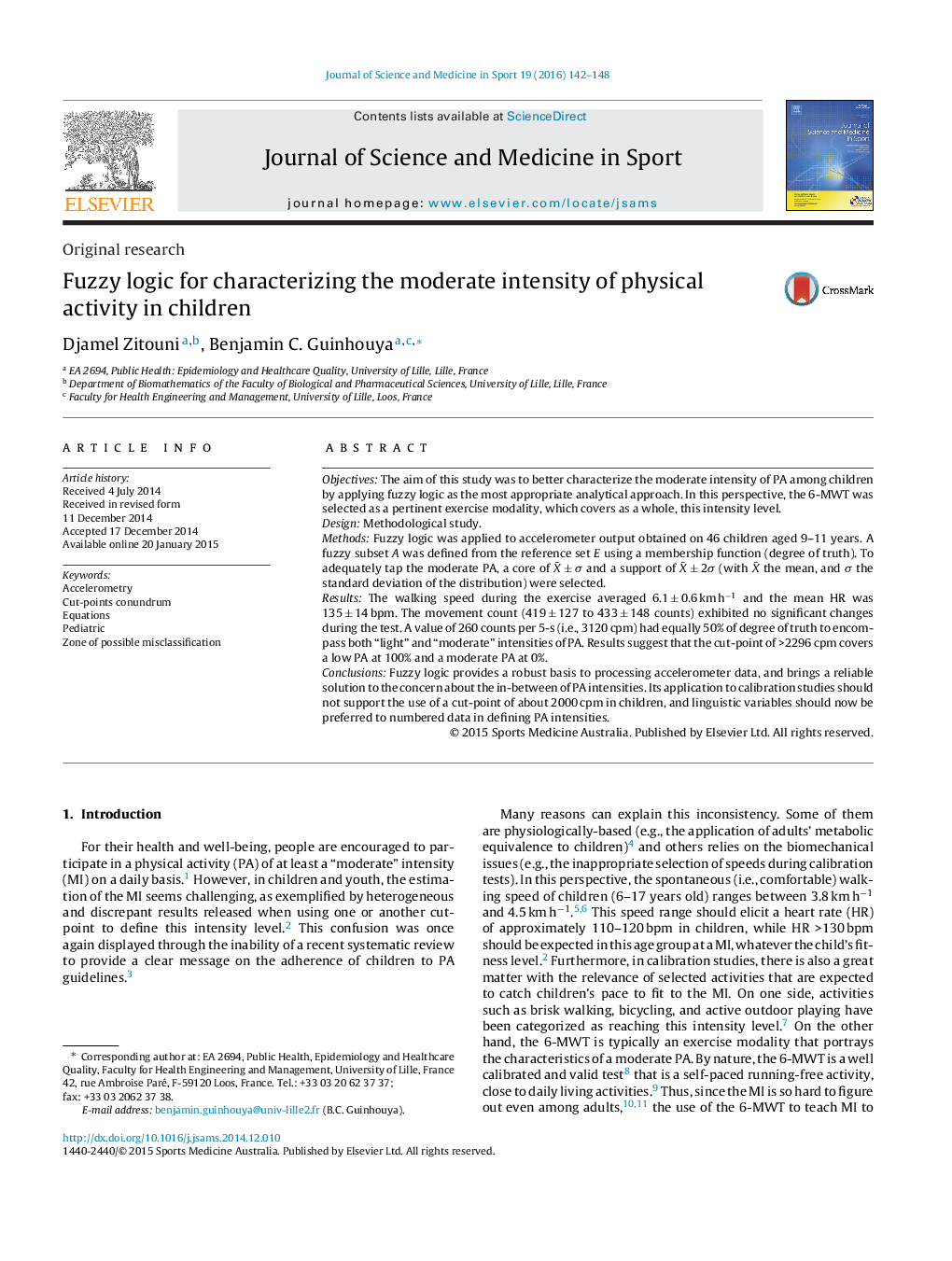| Article ID | Journal | Published Year | Pages | File Type |
|---|---|---|---|---|
| 2703875 | Journal of Science and Medicine in Sport | 2016 | 7 Pages |
ObjectivesThe aim of this study was to better characterize the moderate intensity of PA among children by applying fuzzy logic as the most appropriate analytical approach. In this perspective, the 6-MWT was selected as a pertinent exercise modality, which covers as a whole, this intensity level.DesignMethodological study.MethodsFuzzy logic was applied to accelerometer output obtained on 46 children aged 9–11 years. A fuzzy subset A was defined from the reference set E using a membership function (degree of truth). To adequately tap the moderate PA, a core of X¯±σ and a support of X¯±2σ (with X¯ the mean, and σ the standard deviation of the distribution) were selected.ResultsThe walking speed during the exercise averaged 6.1 ± 0.6 km h−1 and the mean HR was 135 ± 14 bpm. The movement count (419 ± 127 to 433 ± 148 counts) exhibited no significant changes during the test. A value of 260 counts per 5-s (i.e., 3120 cpm) had equally 50% of degree of truth to encompass both “light” and “moderate” intensities of PA. Results suggest that the cut-point of >2296 cpm covers a low PA at 100% and a moderate PA at 0%.ConclusionsFuzzy logic provides a robust basis to processing accelerometer data, and brings a reliable solution to the concern about the in-between of PA intensities. Its application to calibration studies should not support the use of a cut-point of about 2000 cpm in children, and linguistic variables should now be preferred to numbered data in defining PA intensities.
